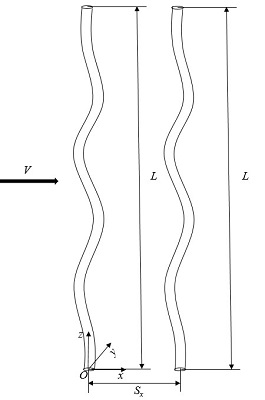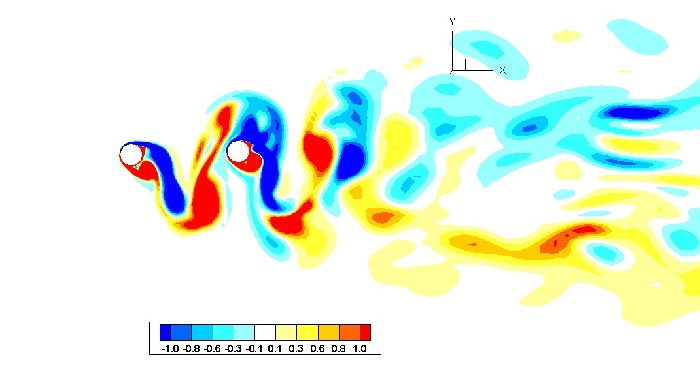Coupled responses of the flow-induced vibration and flow-induced rotation of a rigid cylinder-plate body
By Tao Tang, Professor Qing Xiao
Flow-induced vibration and flow-induced rotation are usually coexisting in nature and engineering applications, typically exemplified by the fluttering motion of leaves and the offshore wind turbine. Some questions are very interesting and needed to be explained. Could the vibration soften rotation responses or not? How does the rotation influence vibration responses?
This project focuses on numerically investigating the coupled responses of a rigid cylinder-plate body, and it is expected to gain insight into the inherent relationship between flow-induced vibration and rotation. Wide ranges of vibrational and rotational reduced velocity are fully considered. Amplitudes, frequencies, phase angles, and vortex shedding modes are systematically analyzed. The flow mechanism is discussed in detail.
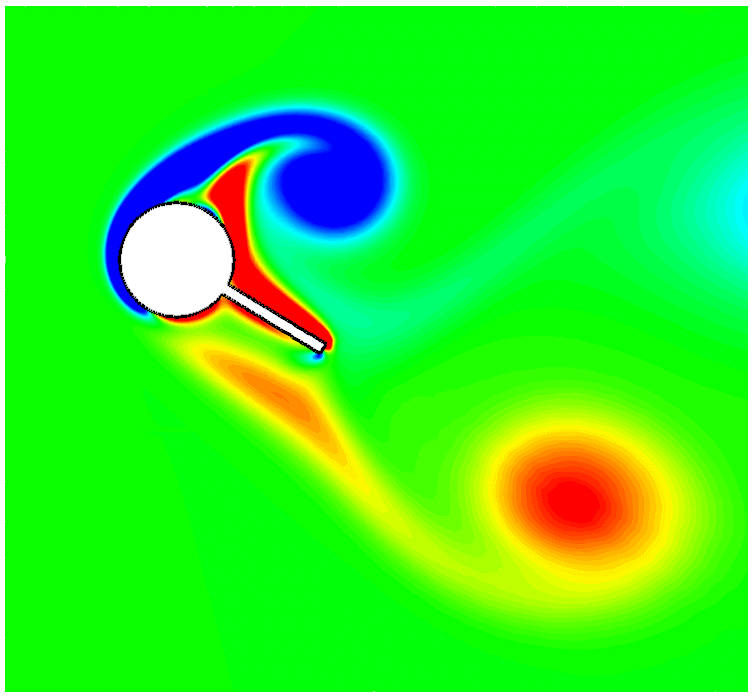
Two-Phase Slug Flow in Vertical Pipes
By Enass Massoud, Professor Qing Xiao
Multiphase flows occur in wide applications including; nuclear, chemical, and petroleum industries. One of the most important flow regime encountered in multiphase flow is the slug flow which is often encountered in oil and gas production systems. The slugging problems may cause flooding of downstream processing facilities, severe pipe corrosion and the structural instability of pipeline and further induce the reservoir flow oscillations, and a poor reservoir management.
In the current project, computational fluid dynamics simulation is used to investigate two phase slug flow in vertical pipe using the volume of fluid (VOF) methodology implemented in the commercial code ANSYS Fluent. The project covers wide range of cases including; drift of single Taylor in stagnant liquid, flow of two consecutive Taylor bubbles in stagnant liquid, rise of single Taylor bubble in concurrent liquid and flow of two consecutive bubbles in concurrent fluid. The study includes both laminar and turbulent flow regimes.
The viscous, inertial, and interfacial forces have significant effect on the hydrodynamic characteristics of two-phase slug flow. These forces can have investigated by introducing a set of dimensionless numbers, namely; inverse viscosity number, Nf, Eotvos number, Eo, and Froude number, FrUTB. The project aims to investigate the main hydrodynamic features of two phase slug flow including; the shape of Taylor bubble, bubble profile, velocity and thickness of the falling film, wake flow pattern, and wall shear stress distribution over wide range of dimensionless governing groups. Correlations for the Taylor bubble rise velocity are as well developed.
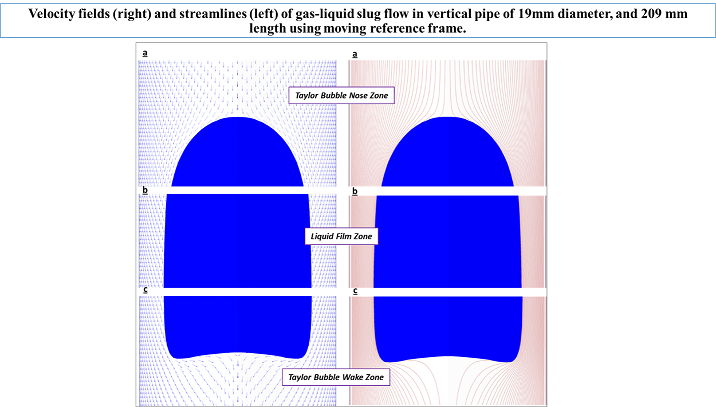
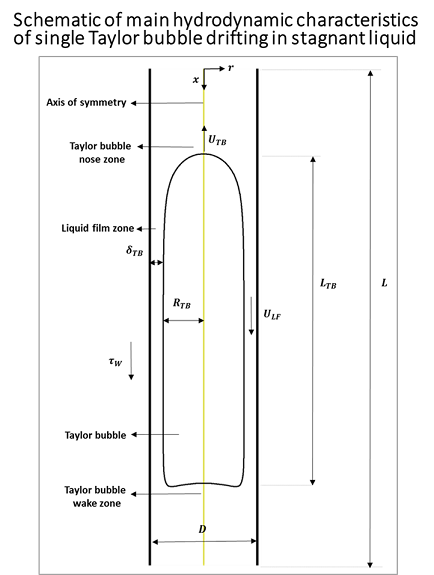
Two-Degree-of-Freedom Vortex-Induced Vibration of an Elastically Mounted Rigid Circular Cylinder
By Enhao Wang, Professor Qing Xiao
Vortex-induced vibration (VIV) of cylindrical structures is a common phenomenon in many engineering applications. Due to its significance, VIV has been extensively studied in recent years. In this study, three-dimensional (3D) numerical simulations of two-degree-of-freedom (2DOF) VIV of an elastically mounted rigid circular cylinder are carried out. The effect of the natural frequency ratio on the 2DOF VIV response of the cylinder and the three-dimensionality of the flow is investigated.
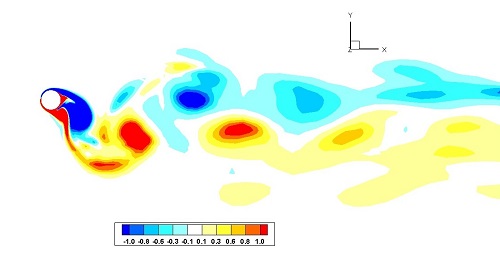
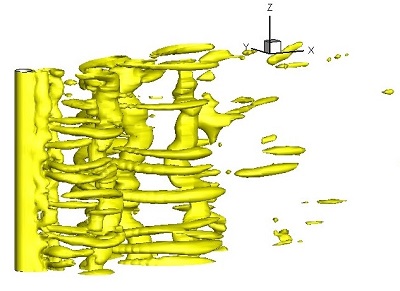
Vortex-Induced Vibration of a Vertical Riser
By Enhao Wang, Professor Qing Xiao
Vortex-induced vibration (VIV) often causes the fatigue of offshore slender structures, such as risers, mooring lines and pipelines. Detailed understanding of this fluid-structure interaction (FSI) phenomenon and an efficient prediction of such self-excited and self-sustained oscillations are required for the reliable estimation of the fatigue damage and the development of VIV suppression techniques. In this study, VIV of a vertical riser in uniform and linearly sheared currents is studied. The main objective of this study is to address the importance of the IL fatigue damage.
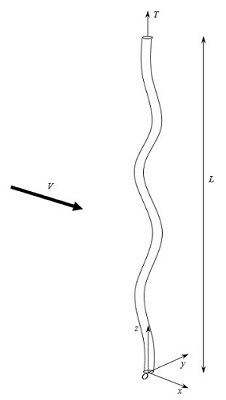
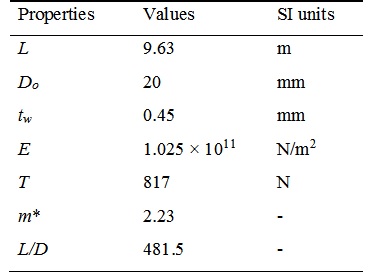
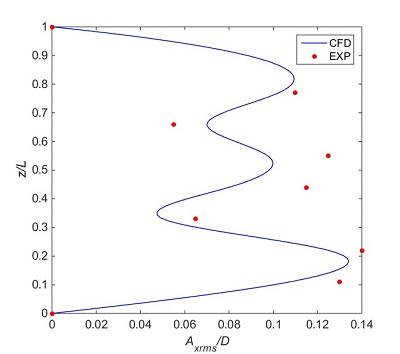
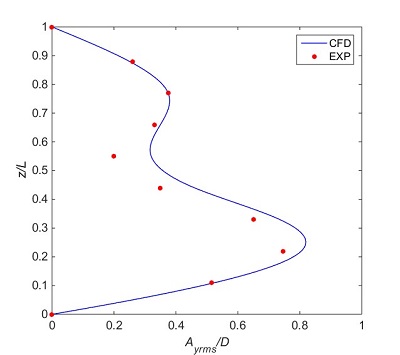
Vortex-Induced Vibration of Two Tandem Flexible Cylinders
By Enhao Wang, Professor Qing Xiao
The interaction between cylindrical structures in tandem arrangement subject to vortex-induced vibration (VIV) is a common phenomenon in marine and civil engineering, such as risers, tension-leg platform (TLP) tendons, heat exchanger tubes and chimneys. When bluff structures are situated in the wake of other bluff bodies, their dynamic responses become very complex and different from the case where they are isolated. In this study, three-dimensional (3D) numerical simulations of VIV of two flexible cylinders in tandem arrangement are performed to investigate the effect of spacing on the VIV responses and the flow features.
